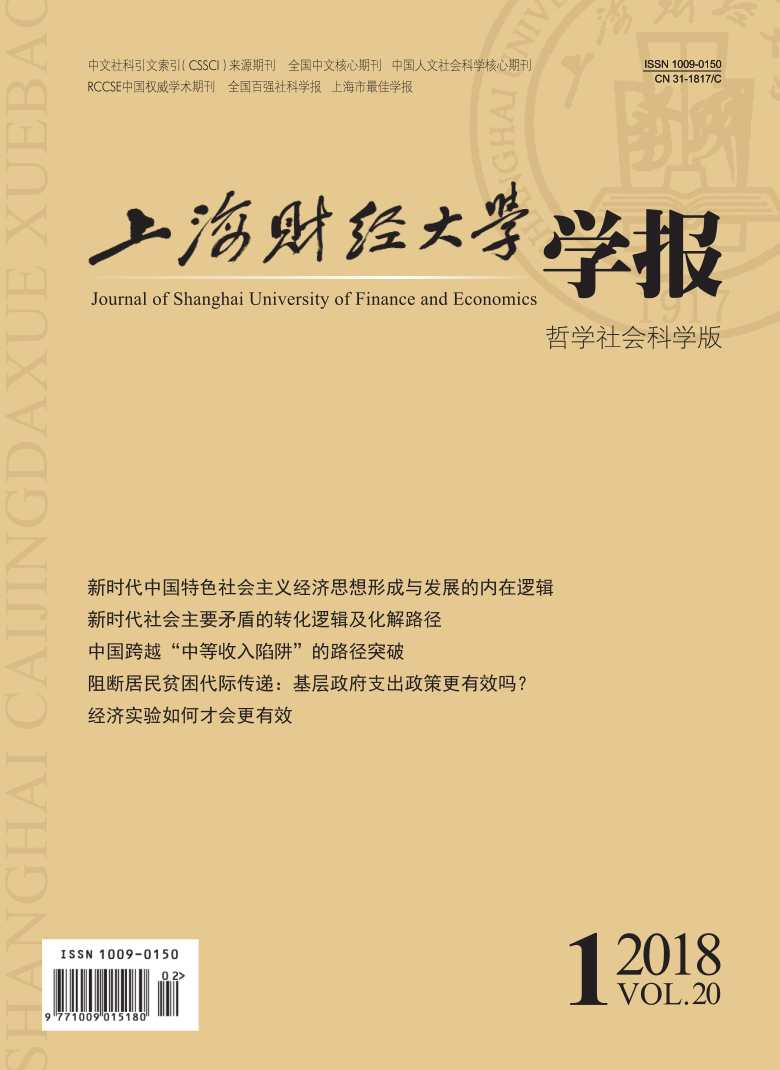The intergenerational transmission of poverty in China is increasingly serious, and has gradually become stable and institutionalized. And it even has been the root of all kinds of social contradictions and one of the main problems in China’s society. This paper aims to empirically assess the effects of China’s public expenditure policies on intergenerational transmission of poverty. We match the individual data of CHNS from 1989 to 2011 with kinds of public expenditure data at different government levels when the investigated individuals are 6-16 years old. Using these data we show the temporal-spatial distribution and the urban-rural characteristics of Chinese intergenerational transmission of poverty. More importantly, based on this data we use hierarchical linear model to establish " null model” and complete model, making empirical analysis of the effect that how public expenditure policies cut off the intergenerational transmission of poverty in the province/county government-household-individual system. It arrives at the conclusions as follows. Firstly, due to the lack of human capital investment ability in poor families, the governments’ public expenditures are needed to make up for it. Therefore, at provincial or county level, science-education-culture-health expenditures have significantly positive effects on the income of children. In reality, due to Chinese fiscal decentralization system, the provincial governments afford more compulsory education expenditures, improving the income of children by making up for their human capital investment to weaken the intergenerational transmission of poverty more effectively. And because local government competition is GDP-oriented, basic construction expenditures flow to the departments that can directly increase GDP; meanwhile, these departments often belong to capital-intensive sectors, thus, the basic construction expenditures increase the longitudinal inequality of income and the intergenerational transmission of poverty. Secondly, partial public spending can indirectly reduce intergenerational transmission of poverty through the increase in fathers’ income but the effect is limited. Finally, compared to the provincial government expenditure, the county government public expenditure to alleviate the effect of intergenerational transmission of poverty remains to be further played, and in a long past time, work of cutting off the intergenerational transmission of poverty is not thorough and meticulous. Based on the conclusions above, this paper believes that the governments should optimize the expenditure structure, and increase education expenditure and other people’s livelihood expenditures to make up for the individual human capital investment of the poor families to block the intergenerational transmission of poverty. At the same time, the governments should introduce infrastructure policies for the poor, providing more employment opportunities so as to improve the poor fathers’ income, and then the overall living standards of the poor families, thereby blocking the intergenerational transmission of poverty. In addition, the governments should follow the specific situation of poor families, and block the intergenerational transmission of poverty more precisely by aiming at the families’ needs or even the persons’ needs.
 / Journals / Journal of Shanghai University of Finance and Economics
/ Journals / Journal of Shanghai University of Finance and EconomicsJournal of Shanghai University of Finance and Economics
LiuYuanchun, Editor-in-Chief
ZhengChunrong, Vice Executive Editor-in-Chief
GuoChanglin YanJinqiang WangWenbin WuWenfang, Vice Editor-in-Chief
Are Public Expenditure Policies of Local Governments More Effective to Cut off Intergenerational Transmission of Poverty?
Journal of Shanghai University of Finance and Economics Vol. 20, Issue 01, pp. 57 - 71 (2018) DOI:10.16538/j.cnki.jsufe.2018.01.005
Summary
References
Summary
Cite this article
Pan Xingyu, Lu Shengfeng. Are Public Expenditure Policies of Local Governments More Effective to Cut off Intergenerational Transmission of Poverty?[J]. Journal of Shanghai University of Finance and Economics, 2018, 20(1): 57–71.
Export Citations as:
For




 8540
8540  8867
8867

